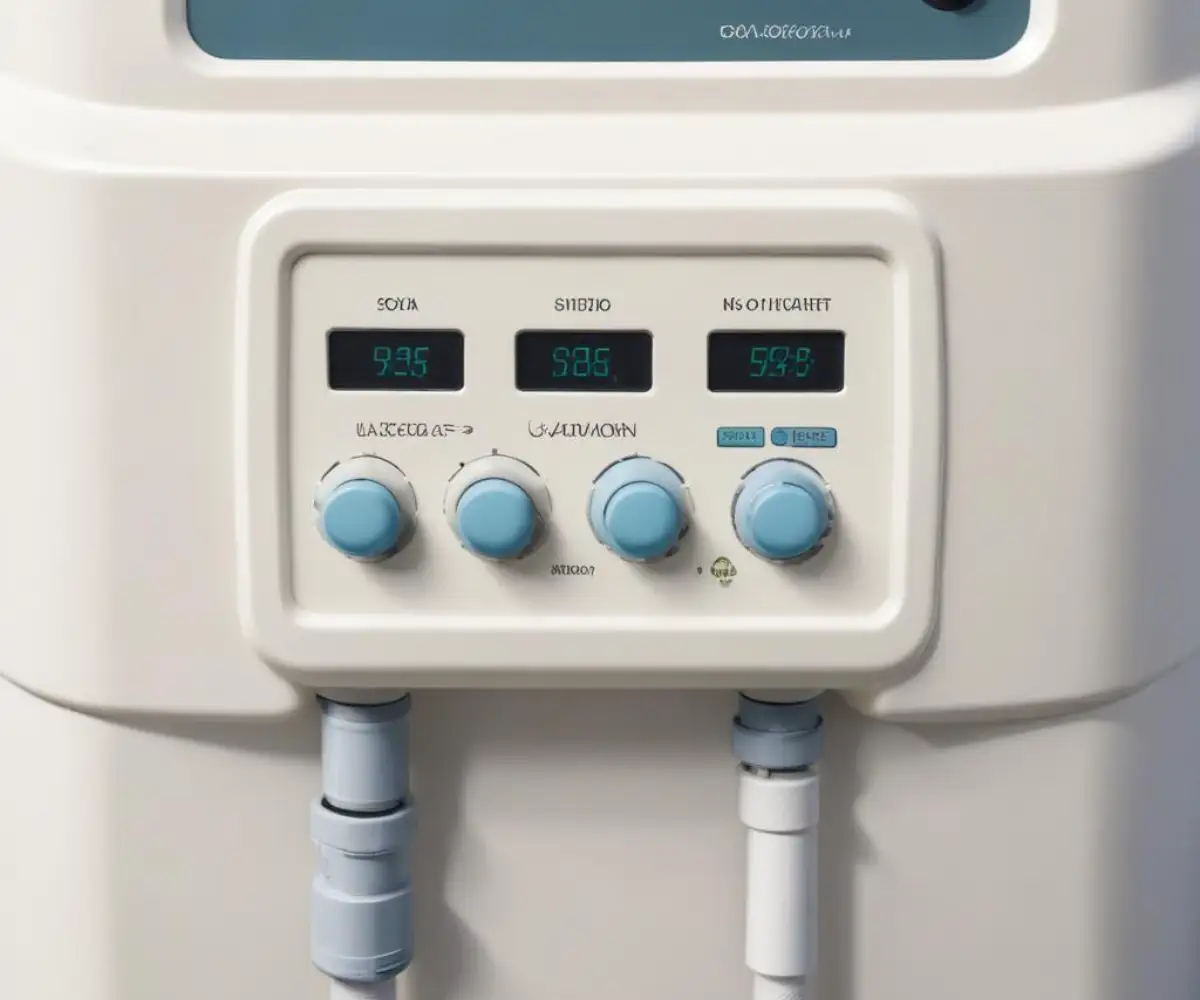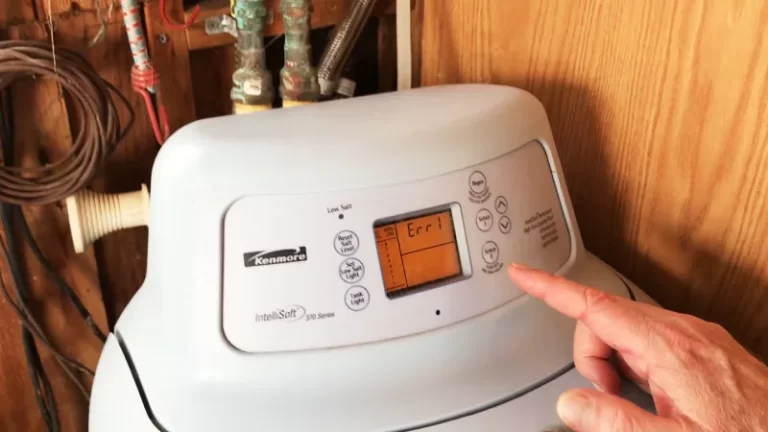AO Smith Water Softener Hardness Setting Wrong? Unlock Peak Performance
You invested in an A.O. Smith water softener, expecting to finally rid your home of hard water headaches. Yet, you’re still seeing stubborn spots on your dishes, your skin feels dry, and your soap just won’t lather properly. The problem likely isn’t the appliance itself, but a single, critical adjustment: the water hardness setting.
Setting this number correctly is the most important step to ensure your softener works efficiently and effectively. An incorrect setting means you’re either wasting salt and water with unnecessary regeneration cycles or, even worse, still living with the hard water you tried to eliminate. This guide will walk you through exactly how to find your correct hardness number and program your A.O. Smith unit for optimal performance.
You'll Learn About
Why the Hardness Setting is So Important
A water softener works through a process called ion exchange. Resin beads inside the tank capture hard minerals like calcium and magnesium, and the hardness setting tells the machine exactly how many of these minerals are in your water. This number, measured in Grains Per Gallon (GPG), dictates how often the system needs to clean itself in a process called regeneration.
If the setting is too low, the softener will underestimate the amount of work needed. It won’t regenerate frequently enough, allowing hard water to bypass the system and enter your pipes. If the setting is too high, the softener will regenerate too often, wasting significant amounts of salt and water and increasing your utility costs without any added benefit.
Step 1: The Crucial Task of Finding Your Water Hardness Number
Before you can program your A.O. Smith softener, you must first determine the hardness of your water supply. This is a non-negotiable step. Guessing the number will only lead to frustration and inefficiency. Here are the most reliable methods to get an accurate reading.
For City Water Users: Contact Your Municipality
The easiest and often most accurate way to find your water hardness is to contact your local water utility. Simply call them or check their website for the most recent water quality report. They will provide the hardness level, usually in milligrams per liter (mg/L) or parts per million (PPM), which you can easily convert to Grains per Gallon (GPG).
To convert PPM or mg/L to GPG, divide the number by 17.1. For example, if your water report says your hardness is 250 mg/L, your GPG would be 14.6 (250 ÷ 17.1), which you would round up to 15 for programming.
For All Water Types: Use a Water Test Kit
If you have well water or simply want to verify the city’s report, a home water test kit is an excellent tool. These kits are readily available at home improvement stores or online. The most common types are test strips, which change color to indicate the hardness level.
Using a test strip is simple: fill a glass with tap water, dip the strip for a few seconds, and compare the resulting color to the chart included in the kit. This will give you a direct reading in GPG, ready to be entered into your softener.
Step 2: The Iron Factor – Don’t Skip This Calculation
Many water sources, especially private wells, contain iron. Standard water softeners can remove small amounts of ferrous (clear-water) iron, but the system needs to be told it’s there. Failing to account for iron will cause the resin bed to become fouled and ineffective over time.
The rule is simple: for every 1 part per million (PPM) of iron in your water, you must add 5 to your water hardness GPG number. For instance, if your water hardness is 15 GPG and your iron level is 2 PPM, your compensated hardness setting would be 25. (15 GPG + (2 PPM x 5) = 25).
Water Hardness Scale
Use this table to understand your test results and what they mean for your home. These classifications help illustrate why treating hard water is so essential for protecting your plumbing and appliances.
| Classification | Grains Per Gallon (GPG) | Milligrams Per Liter (mg/L) |
|---|---|---|
| Soft | 0 – 1 | 0 – 17.1 |
| Slightly Hard | 1 – 3.5 | 17.1 – 60 |
| Moderately Hard | 3.5 – 7 | 60 – 120 |
| Hard | 7 – 10.5 | 120 – 180 |
| Very Hard | 10.5+ | 180+ |
Step 3: Programming Your A.O. Smith Water Softener
With your accurate, compensated hardness number in hand, you are ready to program the unit. While specific models may vary slightly, the process for most modern A.O. Smith softeners with a digital display is straightforward and similar.

Follow these steps to set your hardness level:
- Access the Menu: Press the “Menu” or “Program” button on the control panel to enter the settings screen.
- Navigate to Hardness: Use the arrow buttons (up/down or next/select) to scroll through the options until you find the “Hardness” or “Water Hardness” setting.
- Enter Your Number: Press the “+” or “-” (or up/down arrows) to adjust the number on the screen to match your calculated GPG value.
- Save the Setting: Press the “Save” or “Program” button to confirm the new hardness level. The system will now use this number for all future regeneration calculations.
After programming, your softener is set for peak efficiency. It will now regenerate only when necessary, providing you with consistently soft water without wasting resources.
Troubleshooting Common Softener Issues
Setting the hardness correctly solves the most common problem, but other issues can arise. Hard water buildup is notorious for causing damage over time, which can sound alarming when you hear your water heater sounds like rocks due to sediment. Properly softened water prevents this scale from forming in the first place.
Problem: My Water Still Feels Hard After Setting the Hardness
If your water doesn’t feel soft after programming the unit and waiting for a regeneration cycle, check a few key things. First, ensure the bypass valve is not open, as this would allow hard water to circumvent the softener entirely. Second, check your salt level; the brine tank must have enough salt to create the brine solution needed for regeneration.
Finally, inspect the brine tank for a “salt bridge.” This is a hard crust of salt that can form above the water level, preventing the salt below from dissolving. If you find one, carefully break it up with a broom handle.
Problem: My Appliances Still Have Spots and Stains
Soft water is a game-changer for appliances. It dramatically improves the performance of your dishwasher and washing machine. If you’re still seeing spots, it points to an incorrect hardness setting or an issue with the regeneration cycle. These spots are mineral deposits, the same kind that can cause ugly sprinkler stains on outdoor surfaces. Getting rid of those unsightly marks, much like learning how to remove sprinkler stains from fence, requires tackling the mineral source.
For your appliances, verify your hardness setting and, if needed, initiate a manual regeneration to ensure the resin bed is fully charged. If you’re undertaking a kitchen project, such as a new dishwasher with top controls installation, it’s the perfect time to ensure your water softener is dialed in correctly to protect your new investment from day one.
Problem: The Water Feels Too “Slippery” or “Slimy”
For those new to softened water, the silky, slippery feeling can be unusual at first. This is normal and is the result of your natural skin oils no longer being coated by hard minerals. However, if the feeling is excessive, it’s possible your hardness setting is too high.
An overly high setting can cause the system to work too hard, resulting in water that feels overly soft. Re-test your water and ensure your calculations, especially for iron, were correct. Adjusting the hardness setting down a point or two may provide a more comfortable feel without sacrificing performance.
Maintaining Your System for Long-Term Success
Your A.O. Smith water softener is a long-term investment in the health of your home’s plumbing and appliances. To keep it running smoothly, check your salt levels monthly and only use high-quality water softener salt pellets. It is also wise to re-test your water hardness annually, especially if you use well water, as mineral content can change over time.
By taking a few minutes to find your precise water hardness and program your unit correctly, you unlock the full potential of your water softener. You’ll enjoy better-tasting water, cleaner dishes, softer skin, and the peace of mind that comes from protecting your home’s vital systems from the damaging effects of hard water.

